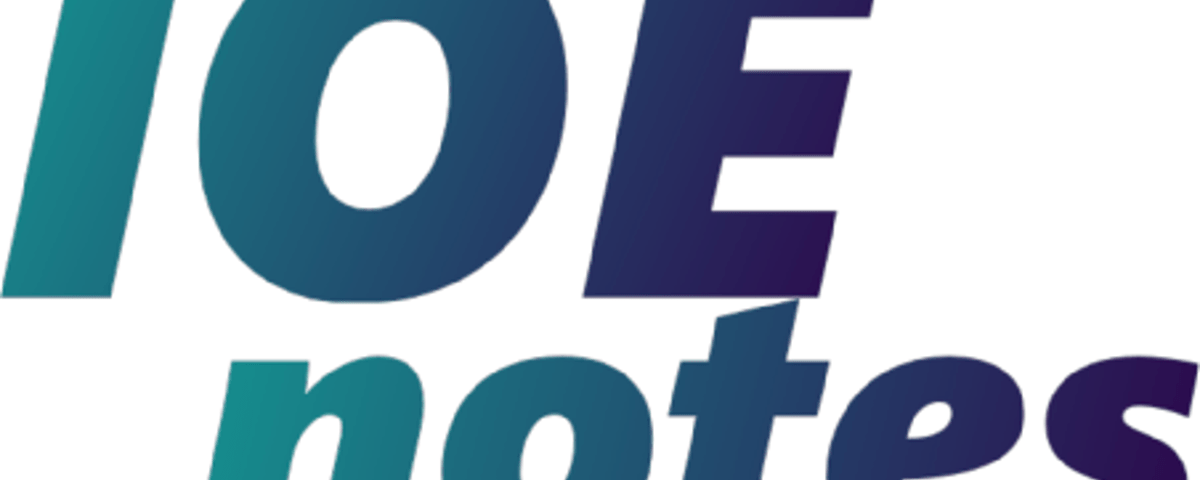Electromagnetics (EM) was introduced for Third Year – First Part of Bachelor’s Degree in Engineering by IOE to provide basic understanding of the fundamentals of Electromagnetics to the engineering students. It has 1 tutorial and 3/2 practicals. Electromagnetics is compulsory course for BE Electrical, Electronics & Communication and Computer. The subject code of EM is EX503. We will be updating the notes of Electromagnetics soon, keep on following us.
- Introduction (3 hours)
- Co‐ordinate system
- Scalar and vector fields
- Operations on scalar and vector fields.
- Electric field (11 hours)
- Coulomb’s law
- Electric field intensity
- Electric flux density
- Gauss’s law and applications
- Physical significance of divergence, Divergence theorem
- Electric potential, potential gradient
- Energy density in electrostatic field
- Electric properties of material medium
- Free and bound charges, polarization, relative permittivity, electric dipole
- Electric Boundary conditions
- Current, current density, conservation of charge, continuity equation, relaxation time
- Boundary value problems, Laplace and Poisson equations and their solutions, uniqueness theorem
- Graphical field plotting, numerical integration
- Magnetic field (9 hours)
- Biot‐Savart’s law
- Magnetic field intensity
- Ampere’s circuital law and its application
- Magnetic flux density
- Physical significance of curl, Stoke’s theorem
- Scalar and magnetic vector potential
- Magnetic properties of material medium
- Magnetic force, magnetic torque, magnetic moment, magnetic dipole, magnetization
- Magnetic boundary condition
- Wave equation and wave propagation (12 hours)
- Faraday’s law, transformer emf, motional emf.
- Displacement current
- Maxwell’s equations in integral and point forms
- Wave propagation in lossless and lossy dielectric
- Plane waves in free space, lossless dielectric, good conductor
- Power and pointing vector
- Reflection of plane wave at normal and oblique incidence
- Transmission lines (5 hours)
- Transmission line equations
- Input impedance, reflection coefficient, standing wave ratio
- Impedance matching, quarter wave transformer, single stub matching, double stub matching.
- Wave guides (4 hours)
- Rectangular wave guide
- Transverse electric mode, transverse magnetic mode
- Antennas (1 hour)
- Introduction to antenna, antenna types and properties.
Practical:
- Teledeltos (electro‐conductive) paper mapping of electrostatic fields
- Determination of dielectric constant, display of a magnetic Hysteresis loop
- Studies of wave propagation on a lumped parameter transmission line
- Microwave sources, detectors, transmission lines
- Standing wave patterns on transmission lines, reflections, power patterns on transmission lines, reflections, power measurement
- Magnetic field measurements in a static magnetic circuit, inductance, leakage flux.
References:
- W. H. Hayt, “Engineering Electromagnetics”, McGraw‐Hill Book Company
- J. D. Kraus, “Electromagnetics”, McGraw‐Hill Book Company
- N. N. Rao, “Elements of Engineering Electromagnetics”, Prentice Hall
- Devid K. Cheng, “Field and Wave Electromagnetics”, Addison‐Wesley
- M. N. O. Sadiku, “Elements of Electromagnetics”, Oxford University Press.
Evaluation Scheme
The questions will cover all the chapters of the syllabus. The evaluation scheme
will be as indicated in the table below
Chapters Hours Marks distribution*
1 3 5
2 11 20
3 9 16
4 12 21
5, 6, 7 10 16
Total 45 80
* There could be a minor deviation in the marks distribution.



1 Comment
What’s up,I log on to your blog named “IOE Syllabus of Electromagnetics (EM) – IOE Notes” on a regular basis.Your humoristic style is awesome, keep it up! And you can look our website about proxy server list.